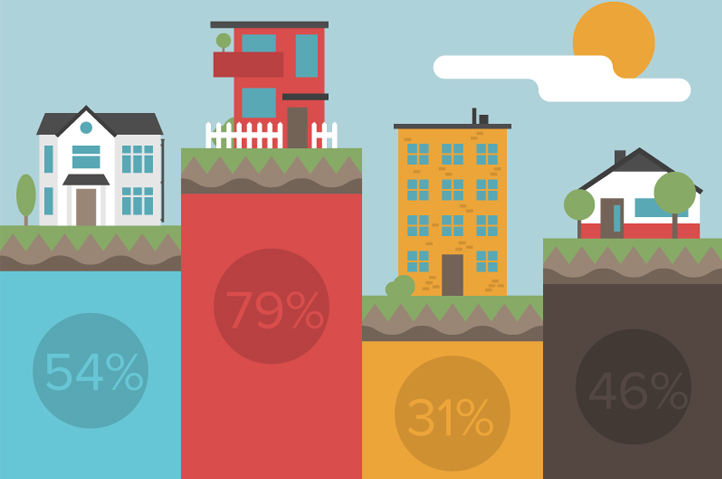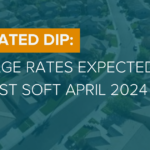Getting involved in real estate investing is not always a walk in the park. Not every property is going to become a gold mine just from applying a fresh coat of paint.
Keep these 4 tips in mind before selecting your next investment property.
Manage Your Expectations
Not every property you find is going to be a home run, so it’s important to research the neighborhood you’re dealing with when considering a flip. Crucial factors such as school system quality, local employment trends, and perceived local crime rate will have a powerful impact on your expected return on a deal in any given area. It is completely plausible and profitable to flip in neighborhoods that have positive or negative local conditions, but you have to be cognizant of the local realities to be capable of calculating the returns one can reasonably expect.
Making a large amount of money on any one deal isn’t the norm. However, less expensive properties in less stable neighborhoods can provide a high return on investment since purchase prices and renovation costs per foot are lower.
When searching for an investment that won’t require substantial renovations, try finding a property that isn’t quite up to par with the other houses in the neighborhood but could be brought up to their level with some minor improvements and cosmetic upgrades. A professional appraiser and a scope of work will aid the investor and their team in deciding how much the house is going to be worth after renovation. This is known as the ARV, or After Repair Value. After receiving the ARV, both the investor and the lender can accurately decipher how good of an investment a property may be.
People are leaving the area
Housing trends can resemble at times fashion or lifestyle trends. When something is hot, everybody wants it. When something falls out of style, no one wants to be a part of it. Property flippers with foresight can often operate very profitably working against the trend such as when there is a lull in demand for available housing with ample supply. This provides excellent opportunities to procure investments at significant discounts.
It pays to be very cautious, however. If you’re seeing a mass exodus of people out of an area, you may want to spend quite a bit of time investigating the opportunities. It’s not a coincidence that many people are all leaving the same area and it is undoubtedly a sign that there are issues with the location such as lack of jobs or lack of entertainment.
However, people in these places tend to panic at times like these and finding remarkably low pricing on real estate could be your reward. Whatever the reason, once people are out, they’re not going to come back for a while, so make sure the property is rentable until it is sold and that the return on your investment is worth the risk. Traditionally, investing in areas that are on the rise is the safer route but it will be more difficult to find an off-market deal because there will be more competition.
The property has been on the market a while
A lot of investors try to pick up properties that have not been on the market for very long. Many believe that the best deals are snatched up within days, if not hours, of being listed due to the nature of acquiring property through short sales, auctions, and word of mouth. Distressed properties tend to make the most desirable real estate investments thanks to their ability to be purchased at a discount.
It is very possible to start flipping houses that sit on the market for an extended period of time, but you have to be aware of the costs that may come with it. These extra costs do not necessarily make the property a bad investment – it’s just not the typical property that people think of when investing in real estate. The longer time on market could be an indicator that the house no longer fits the needs of the market, which often means a larger rehab investment to make it desirable again.
Real estate investors typically hate holding properties for extended periods of time. The longer you own the property, the more you can expect to pay in soft costs like interest payments, utilities, and even outdoor maintenance. In addition, the longer it takes to sell the property, the longer your capital is tied up and unable to be reinvested. If you’re thinking about investing in a property with a higher expected turnaround time, make sure the loan fits the flip. That means securing enough financing to cover the extended rehab costs and unforeseen complications, as well as having enough liquidity to carry the loan for a longer time period than usual.
Know your limits
This really applies to first time real estate investors. Be wary of how much you’re investing in the restoration of the house, and avoid investing in an expensive property if the return value is low. Investing $500,000 in a property to make $20,000 does not make sense. It is too easy to have unexpected costs that eat into your profit and make the investment a flop.
If you’re working with a smaller budget or are new to the business, you may want to consider investing in houses that have low repair costs until you gain enough capital and/or experience to make larger investments. That being said, keep in mind what kind of houses are going to have larger repair costs. Larger homes are going to need more repair and more time to complete thanks to increased material and holding costs. The same applies to older homes. Older homes may have mandatory repairs that newer homes don’t require such as removal of lead paint and overall foundation issues due to age. Both of these factors delay completion time and add to the growing repair cost.
There’s no shortage of profitable investment opportunities, so keep these tips in mind the next time you’re on the hunt for a great deal.







0 Comments
Trackbacks/Pingbacks